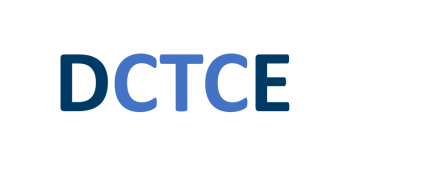A NEXT GENERATION MODEL FOR ELECTRONIC TAX REPORTING AND INVOICING - DCTCE v2.0
Recommendation for a decentralised approach beneficial to both economic operators and tax administrations for the digitisation of VAT reporting based on Continuous Transaction Controls and electronic invoicing.
This document proposes a next generation model for the reporting of VAT and similar indirect taxes to Tax Administrations, which is fiscally effective and mutually beneficial for stakeholders. It is described as the Decentralised CTC and Exchange Model (DCTCE).

An increasing number of countries are implementing digital solutions to combat VAT fraud, and under-collection. The Tax Administrations of such countries require economic operators[1] to report invoice data directly from their transaction processes to complement or replace periodic VAT returns. These requirements for real-time or near-real-time transmission of invoice data to the Tax Administration for reporting purposes are often referred to as Continuous Transaction Controls (CTC), and as transaction-based reporting.
The document provides a description of the main categories of CTC Models, which differ substantially from country to country, requiring taxpayers operating in more than one country to navigate systems performing the same economic function. Most of the models implemented so far are domestic-centric, are designed from a tax optimization perspective, and are not as business-friendly as they could be. The document describes a way in which CTCs can be implemented that attain fiscal objectives for capturing invoice data in a central tax platform with the support of certified service providers operating on a decentralised basis. It can be beneficially deployed in multiple jurisdictions, and support indirect tax controls for domestic, cross-border, and multi-country operations. Whilst the core elements of such a Model would be the same across different jurisdictions, individual Tax Administrations would be able to select and embed their country-specific requirements and local practices.
The DCTCE Model simultaneously provides an Exchange Network that supports the adoption of efficient economy-wide electronic invoicing, closely integrated with the CTC functionality. This creates an attractive value proposition for supporting interoperability between economic operators of all sizes. Given that many have already made individual and collective investments in supply chain automation and electronic invoicing, the proposed model would protect and grow these benefits. It is perfectly possible within the recommended Model to provide low-cost connectivity services for small and medium sized enterprises (SMEs).
The document provides descriptions of the models used to date for CTCs, establishes and applies evaluation criteria to them, and discusses important issues impacting policy.The recommended DCTCE is presented as an innovative way to provide a balance of benefits for both public and private sector based on standards and available technology. There is a promising solution under advanced development: Peppol CTC which could form the basis of a multi-stakeholder approach.
[1] Economic Operator is a business, other organisation, or person, which supplies goods or services. Depending on the context, the document also refers to roles of an economic operator, such as trading party and taxpayer.
Version 2.0 of 3 August 2022 includes a set of endorsements
